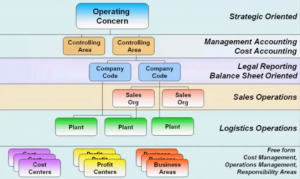Definition of ETL Testing:
ETL is short for concentrate, change, load, three database works that are joined into one apparatus to haul information out of one database and spot it into another database. Concentrate is the procedure of perusing information from a database.
ETL Testing Use Cases:
• Production Validation (testing information before moving into generation). Once in a while called "table adjusting" or "generation compromise," this sort of ETL testing is done on information as it is being moved into creation frameworks. The information in your generation frameworks must be right with a specific end goal to bolster your business choice making. Informatics Data Validation Option gives the ETL Testing robotization and administration abilities to guarantee that your creation frameworks are not traded off by the information overhaul process.
• Source to Target Testing (information is changed). This sort of ETL testing approves that the information values after a change are the normal information values. The Informatica Data Validation Option has a substantial arrangement of pre-assembled administrators to manufacture this sort of ETL testing with no programming abilities required.
• Application Upgrades (same-to-same ETL testing). This sort of ETL testing approves that the information originating from a more established application or vault is precisely the same as the information in the new application or storehouse. Must of this sort of ETL testing can be naturally produced, sparing significant test improvement time.
Advantages of ETL Testing with Data Validation Option:
• Production Reconciliation. Informatics Data Validation Option gives robotization and perceptibility to ETL testing, to guarantee that you convey trusted information in your generation framework redesigns.
ETL Testing Online Training Courses:
Data Ware House Concepts:
• Data Ware House overview
• OLTP Vs. DataWare Housing
• Data Acquisition
• Data Extraction
• Data Transformation
• Data Loading
• Data Marts
• Dependent and Independent Data Mart
• Data Base Design
• Star Schema
• Snow Flake Schema
• Fact constellation Schema
• Data Ware House overview
• OLTP Vs. DataWare Housing
• Data Acquisition
• Data Extraction
• Data Transformation
• Data Loading
• Data Marts
• Dependent and Independent Data Mart
• Data Base Design
• Star Schema
• Snow Flake Schema
• Fact constellation Schema
Slowly Changing Dimension (SCD)
• Types of SCD
• SQL Concepts
• ETL Tool Architecture overview
• White Box testing & Black BOX testing on various transformation Rules
• Data Ware House Life Cycle
• Types of SCD
• SQL Concepts
• ETL Tool Architecture overview
• White Box testing & Black BOX testing on various transformation Rules
• Data Ware House Life Cycle







